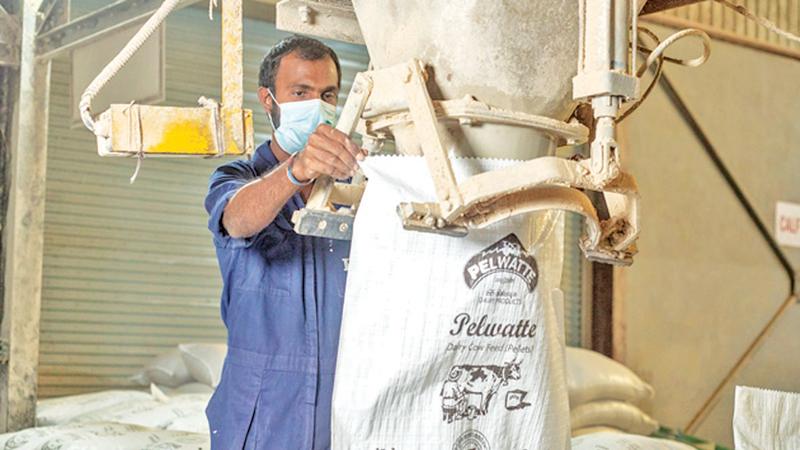
Pelwatte Dairy which began producing its own feed in 2009 does not compromise on the quality of the product. Dairy cattle feed is not similar to usual cattle feeding since the quality and volume of the feed have a direct impact on the quality and quantity of milk the dairy cows produce.
Many factors, such as the live weight of the animal, its stage of life and production, and the ratio of dry feed vs liquid feed to the animal, are taken into consideration before the “feeding menu” of dairy cattle are finally decided by Pelwatte.
Senior Executive, Mechanical Engineering, Feed Mill in-charge, P.A.P. Kumara said, “Pelwatte observed that the cow nutrition was the main and important factor to increase productivity of the animal and serve tastier dairy to the consumer. We set up the animal feed mill giving priority to the project with a designed capacity of 60 MT per day.
“As a national dairy producer reputed for saving valuable foreign exchange, I am pleased to say that since the setting up of the mill, Pelwatte has been producing its own animal feed for many years. We produce over 300 MT cattle feed each month.
“This feed is used by our own dairy suppliers. The high-quality cattle of feed from at Pelwatte production facilities are backed by its registration with the Department of Animal Production and Health,in their various stages of manufacture-from raw material inputs to the output of animal feed pellets. We believe that the domestically created feed of such high quality is what gives the rich, creamy flavour to our dairy products,” he said.
The process of Pelwatte animal feed manufacture is demanding in its nature due to the need for adherence to quality. The raw material inputs such as corn and rice are first cleaned thoroughly removing any dust and other roughage. Minor and major ingredients are mixed after which they are arranged into batches. Mixing is a critical act since the quality of the mixing decides on the overall quality of the final product. Granulation, bulk density, accuracy of proportioning and mixing time are among factors contributing to a good mix.
This prepared raw material is fed to conveyor belts for grinding which outputs the powder form of the mix.Molasses are mixed thereafter. Molasses give the palatability and edible feel to the rough pellets. This mixture of molasses and raw material blend is then ‘cooked’ at 85 degreesCelsius for 15 seconds to condition it.
While it is hot the conditioned mix is pelleted thereafter and then these pellets are cooled.Such cooled pellets are sieved and good pellets coming from sieve are sent to packing mill while the rest are re-sent for pelleting until they acquire the quality of good pellets that are sent to packing mill.
Senior Executive P.A.P. Kumara said, “The high yield feed is a concentrated, energy dense product with high protein. In general, the high yield feeds are used when other feeds do not have higher.
“The high yield feed is an essential food input for cows that usually produce higher volumes of milk. This feed gives such high producing cows with the strong and dense protein and nutrients that they require. Pelwatte feeds the high producing dairy cows on a plan of continued increase in the feeding volume in order to allow them to sustain their health as well as milk output.
“Since higher grain levels in the high yield feed can negatively impact the quality and quantity of milk, Pelwatte takes precautions to carefully moderate the grain percentage in its high yield feed,” he said.
